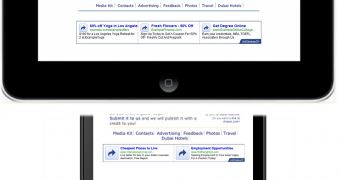Google's bread and butter is advertising. While it's gotten itself in anything related to the web and beyond with things like Android or Google TV, most of its money comes from advertising. Obviously, it has a big interest in keeping its ads competitive.
With the mobile web exploding in usage, Google is adapting. It built Android so it could sell mobile ads, it's clearly very interested in the space.
Now, it's highlighting some of the changes and new types of ads it's using to make them the best fit for whatever platform the viewer is using, a desktop browser, a tablet device or a smartphone.
In each case, the same ads will be formatted and displayed differently, depending on what makes sense for the device.
"We’re making our text ads smarter and will soon display them differently so they perform optimally depending on where users are viewing them from: computers, tablets, or smartphones," Priya Gupta, Mobile Ads Engineering at Google, wrote.
"The best part is that our ads do the right thing automatically - without any changes required to your web pages - by detecting what device your web page is being viewed from," he said.
"With this change, we’re taking advantage of the unique features of mobile devices to deliver more engaging, better-performing ads," he added.
For example, a typical 728x90 leaderboard will display five text ads, in a list. The bigger screen size means that they're all visible and because visitors will be using a mouse, the links can be small.
However, on a tablet, regular links are troublesome. The same ad unit will only display three separate ads, in a row and the clickable area will be much larger. Finally, on smartphones, only two of these ad boxes will be displayed with an even larger touch button next to them.

 14 DAY TRIAL //
14 DAY TRIAL //